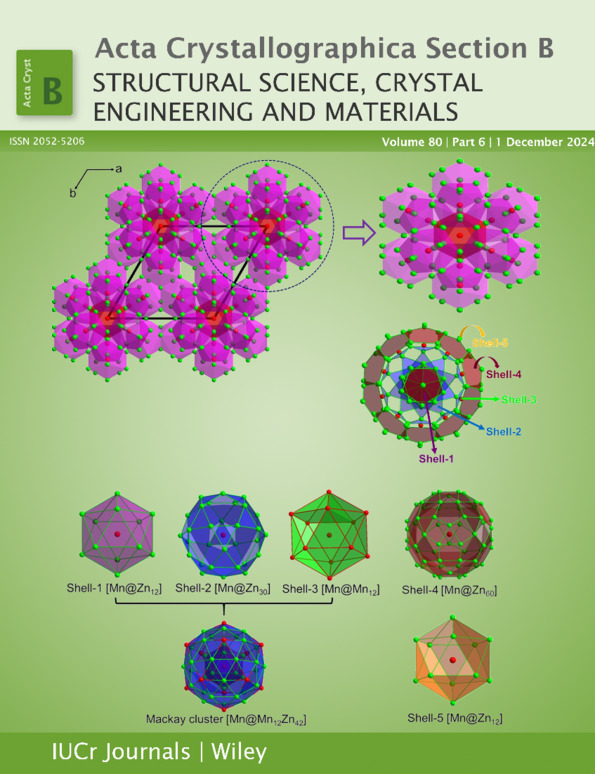Atypical phase transition, twinning and ferroelastic domain structure in bis(ethylenediammonium) tetrabromozincate(II) bromide, [NH3(CH2)2NH3]2[ZnBr4]Br2
Abstract
Single-crystal growth, differential thermal analysis (DTA), derivative thermogravimetry (DTG), differential scanning calorimetry (DSC), X-ray structural studies and polarized microscopy observations of bis(ethylenediammonium) tetrabromozincate(II) bromide [NH3(CH2)2NH3]2[ZnBr4]Br2 are presented. A reversible phase transition is described. At room temperature, the complex crystallizes in the monoclinic system. In some cases, the single crystals are twinned into two or more large domains of ferroelastic type with domain walls in the (100) crystallographic plane. DTA and DTG measurements show chemical stability of the crystal up to ∼538 K. In the DSC studies, a reversible isostructural phase transition was revealed at ∼526/522 K on heating/cooling run, respectively. Optical observation on the heating run reveals that at the phase transition the plane of twinning (domain wall) does not disappear and additionally the appearance of a new domain structure of ferroelastic type with domain walls in the planes (101), (101), (100) and (001) is observed. The domain structure pattern is preserved after cooling to the room-temperature phase and the symmetry of this phase is unchanged.




